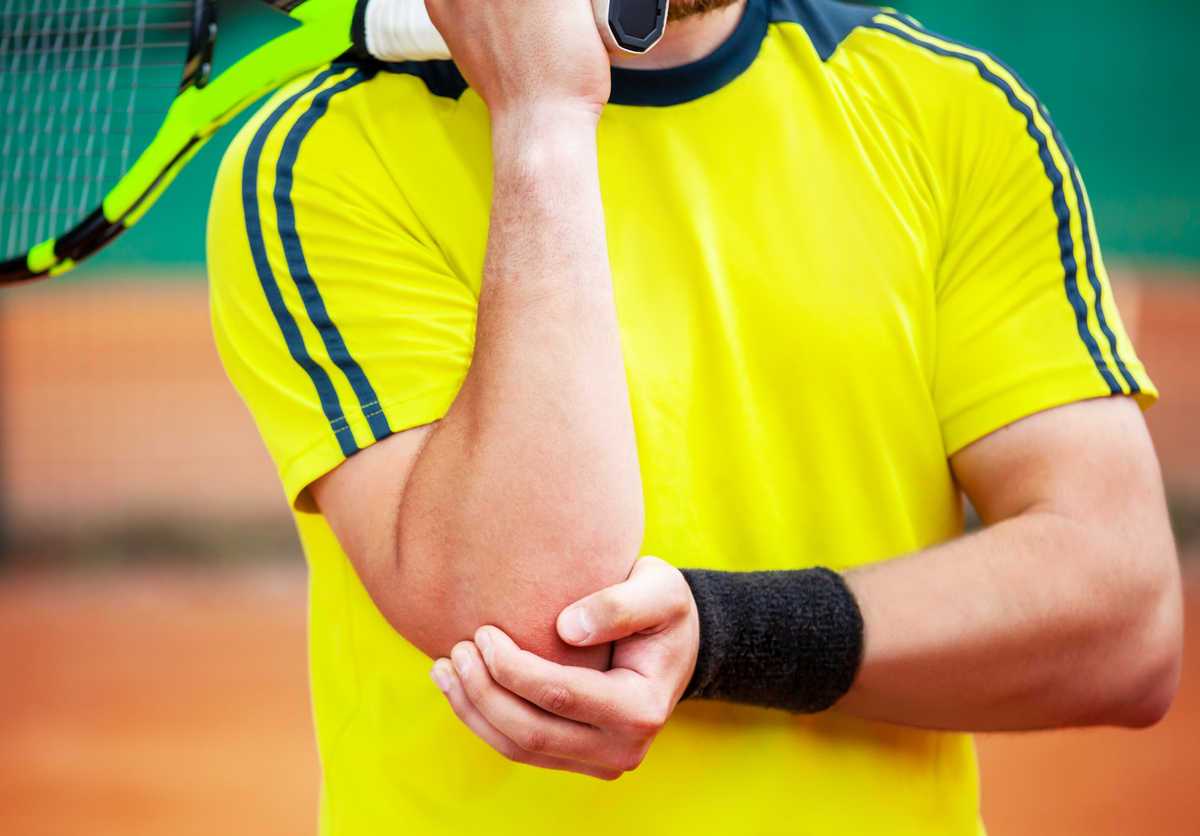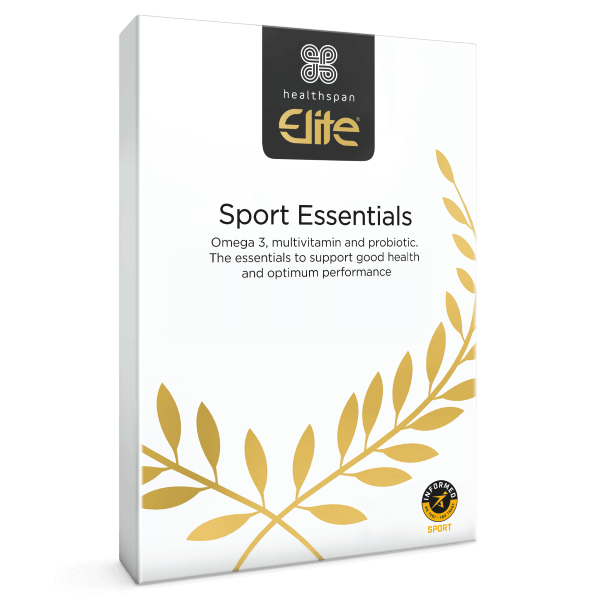Karrina Howe explains why tennis elbow is a serious injury and one that, if left untreated, can cause lasting damage and pain.
What causes tennis elbow?
Most cases of tennis elbow are caused by structural changes in the tendon. Lack of mobility, poor mechanics, overuse and/or muscle imbalances can all contribute to these structural changes, and the more activity, the higher the risk. What starts as a dull ache, aggravated by bending or straightening the arm and gripping, can extend down the forearm, or upwards into your bicep and triceps, where more nerves are at risk of becoming aggravated.
Tendons attach the muscle to the bone and help create elasticity within the joint. When a tendon, such as those found in the elbow, is overused it becomes stressed and shortens, developing adhesions, inflammation, and pain at the attachment muscle and tendon at the outer elbow.
Tennis elbow treatment
Once tennis elbow develops, it's natural to experience inflammation around the elbow, as this is the body's normal healing process. Pain, swelling, redness, and warmth are all common symptoms of this acute response. It is when this inflammation response becomes extended, chronic, and even systemic that it is difficult to manage. If pain develops in the arm, be sure to visit your doctor sooner rather than later.
Applying ice to any injury reduces inflammation. The cold temperature causes small vessels to constrict (known as vasoconstriction), and the numbing effect of icing can help relieve some of the immediate, irritating pain. After injury, use ice application intermittently for the first two days for 15-20 minutes every hour, six to eight times a day. Never ice a chronic injury before activity.
Tennis elbow exercises
If exercising is causing pain, then you may want to look at a change of routine. If it hurts, avoid the movement. Introduce rest days after an intense training day, allowing time for the elbow to recover. Use these days to focus on upper body mobility (a tight posterior shoulder capsule may contribute to elbow pain), or spend some time on massage therapy and flexibility, focusing on soft tissue work.
Engage in rehab with pain-free strengthening exercises such as wrist curls, reverse wrist curls, elbow flexion, elbow extension, and forearm pronation/supination.
If you work at a desk all day, you may also want to overhaul your desk station to change how you sit, how your wrists move, and even think about using a wrist rest.

It doesn't just affect tennis players, either; one in three citizens will develop this pain on the outside of their elbow.
Eat to heal
Tendons heal slowly after breaking down, as they do not have access to a good supply of blood vessels. Blood, oxygen, and nutrients take a long time to find their way into connective tissues and tendons, meaning that healing after an injury can take as long as two years.
In order to speed up recovery, you will want to support your connective tissues' health with a nutrient-rich, low-inflammation diet. Limit inflammatory foods (such as processed foods and sugar) and any foods to which you know you're intolerant. Acidic foods contribute to arachidonic acid, which can prolong inflammation. With this in mind, try to limit the amount of tea, coffee, alcohol, and carbonated soft drinks you consume.
Promote tissue healing with colourful fruits and vegetables, and pair with lean protein, which provides the building blocks of tissue repair. It is vitally important that your body is given all the essential vitamins and nutrients it needs in the recovery process. To help guide you, here are some key nutrients which can help you on your way to healing your tennis elbow.
Vitamin A
Vitamin A enhances and supports early inflammation during injury, reverses post-injury immune suppression, and assists in collagen formation to help repair tissue damage. Great sources of this include sweet potatoes, carrots, dark leafy greens, and fish.
Vitamin B12
This vitamin aids the body's efficiency in generating new proteins and tissue for muscles and ligaments, speeding up the healing process. Foods such as lean meats and dairy products serve as sources of vitamin B12, and eating these foods may help to support recovery after a muscle or ligament injury.
Vitamin C
Despite being best known for fighting colds, Vitamin C has plenty of other great properties. It plays an important role in collagen synthesis, helping form bonds between strands of collagen fibre. A vitamin C deficiency can cause collagen fibres to form abnormally and fibrous tissue to weaken due to poor adhesion. To avoid this, consume quality sources of vitamin C such as red peppers, oranges and chilli peppers.
Zinc
This plays a role in DNA synthesis, cell division, and protein synthesis – all necessary for tissue regeneration and repair. Zinc is one of the most common micronutrient deficiencies, and has been associated with poor wound healing. Foods rich in zinc are fish, poultry, eggs, red meat and legumes.
Calcium
It is a well known fact that calcium is especially important for growth, maintenance and repair of bone tissue, maintenance of blood calcium levels, regulation of muscle contraction, nerve conduction, and normal blood clotting: all important factors in the recovery process. Being deficient in calcium increases the risk of low bone mineral density and stress. Get enough calcium simply by incorporating foods such as milk, cheese, leafy greens, and oranges into your diet.
Iron
Iron is essential in the formation of the oxygen-carrying proteins haemoglobin and myoglobin, aiding in building those protein blocks and amino acids, and for enzymes involved in energy production. It is key to the 'rebuilding' process, something that is important for anyone suffering from tennis elbow. Iron deficiency, with or without anaemia, can impair muscle function and limit work capacity. Dark leafy greens, poultry, fish, and beans are all rich in iron.
Magnesium
Necessary for cellular metabolism (glycolysis, fat, and protein metabolism) and regulating membrane stability and neuromuscular, cardiovascular, immune, and hormonal functions. It plays a role in the relaxation and contraction of muscles, and it also improves nervous conduction, which influences muscle contraction and relaxation further. This will help with any swelling and pain in the elbow. You can find magnesium in almonds, cashews and leafy green vegetables.
Omega 3
Found in fish oil and fats, omega 3 is necessary for the regular functioning of your body, and the type of oil consumed matters significantly. Currently, most Western diets consist of too many omega-6 fatty acids, such as corn and sunflower oil, and not enough omega-3s, which are prevalent in fish oil. By eating fish directly, or by a taking a quality supplement, it can help with the inflammatory response to tennis elbow: reducing pain and swelling whilst increasing circulation to the site of injury.
Although all these vitamins and minerals can be sourced from whole foods, if your diet is lacking in certain areas, or your tastes may mean you neglect a specific food source (a dislike for fish, for example), there are plenty of supplements to fill any gaps in your nutrition. Investing in high-quality supplements is not only a convenient way to ensure that your body has everything it needs to heal your injury, but can additionally benefit your body as a whole.

Elite Sport Essentials
Three essential supplements to support good nutrition and optimum performance
- Multivitamin, omega 3 and probiotic
- Convenient daily tear strips
- Supports energy levels, recovery and digestive health
Recover and stay healthy
By ensuring you take the right steps to recovery, you will find that you can slowly begin to introduce yourself back into your previous training routine. Before resuming any activity, be sure to seek medical advice. Find a mobility routine that you can perform before and after workouts, to prevent any future injuries. Supplements, nutrition, and training go hand in hand when it comes to recovering any injury; and especially those as specific and common as tennis elbow.








